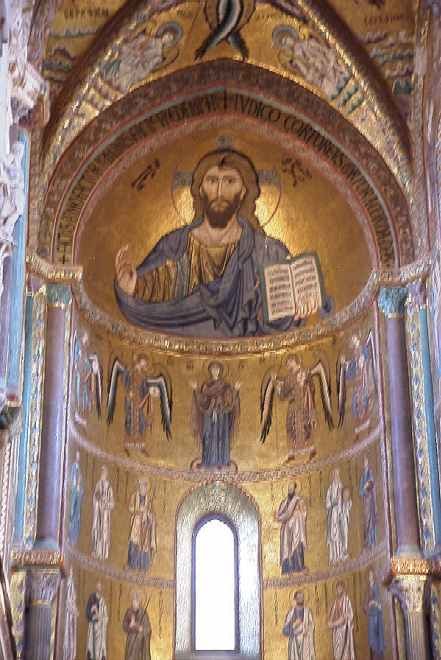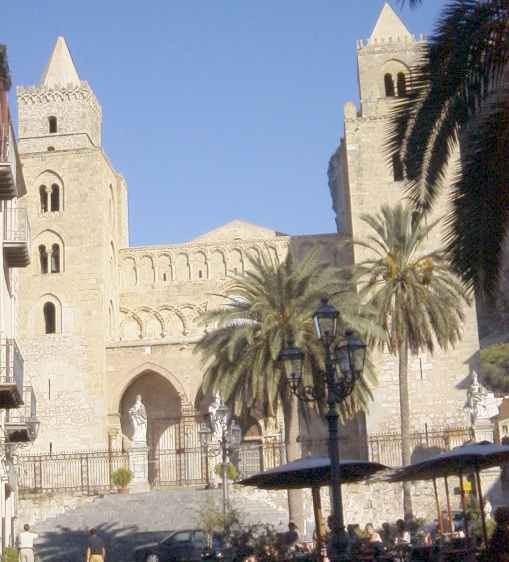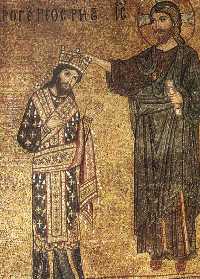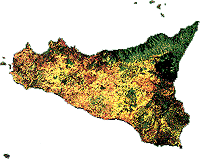
 The Norman Cathedral
The Norman Cathedral
We continued along the North coast of Sicily on our way to Palermo. Cefalu was the first stop to show us what a Norman (Romanesque variant) church was like. Within 20 hours we were to see several more. The town itself lies flat on the sea with an ominous limestone cliff (La Rocca) behind it with clearly viewable large caves. From a distance, the town is quite spectacular.
After winding through narrow medieval streets for several blocks, we reached the Duomo shown at the top of the page. You may have noticed that the towers don't exactly match. In fact, we found Norman cathedrals to be as drab on the outside as they are spectaculary inside with their quaint mix of Arab and Byzantine craftsmenship, religion and propaganda. In way, they embody the diverse contradictions that make Sicily the fascinating but inconsistent place that it is.
(Pietrina wants me to change this headline but I haven't seen any lightning bolts yet, so it stays)
The cathedral is 800 years old and took a 110 years to complete after Roger II started it to fulfill a vow he made while being shipwrecked on a trip from Naples. Roger, a descendent of Vikings whose father had subdued the Arabs, was quite an interesting character who not only kidnapped the pope, but dealt with an anti-pope in the hopes of getting a better deal. After that, he obviously owed us a church. He may have intended this to be the burial site of his family.
Norman churches have a feel quite different from almost anything else you could imagine. Roger tolerated the Arabs that he ruled and engaged their craftsmen. Arabs were forbidden by their religion from creating images of humans which can be somewhat of a problem if you're building a Christian church. (Let's not even get started on the iconoclasts who also created a stir in Sicily). To get around this limitation, the architects used the Moslem elements in the sides and great wood ceilings. They would then employ Byzantine artisans to create the images in spectacular green and gold colored mosaics. Hopefully some of this shows in the picture below which was pretty tough to get in the dim light. (I'm going to start bringing a tripod if I can get one small enough).

The image is called Christ Pantocrator and is common in the Norman churches and immediately captures your attention when you enter the cathedral. The Pantocrator images are typically very large and often have the sad wistful look we see here. They hold books of laws, this one being in Greek and Latin.
The Norman kings were not above a little propaganda as can be seen by this mosaic poster in a church showing Christ crowning Roger II. No wonder he could be a little casual with popes and anti-popes.

Confused? Need a timeline of Sicilian history to keep track of the Phoenician, Greek, Roman, Arab, Norman, English, Spanish, French, Canadian, American invaders? If so, click on this link.
As the brilliant afternoon waned, we made our way back through town to the bus which took us to Palermo. Please join us by clicking here.
Where do you want to go today? Here's a few choices:
